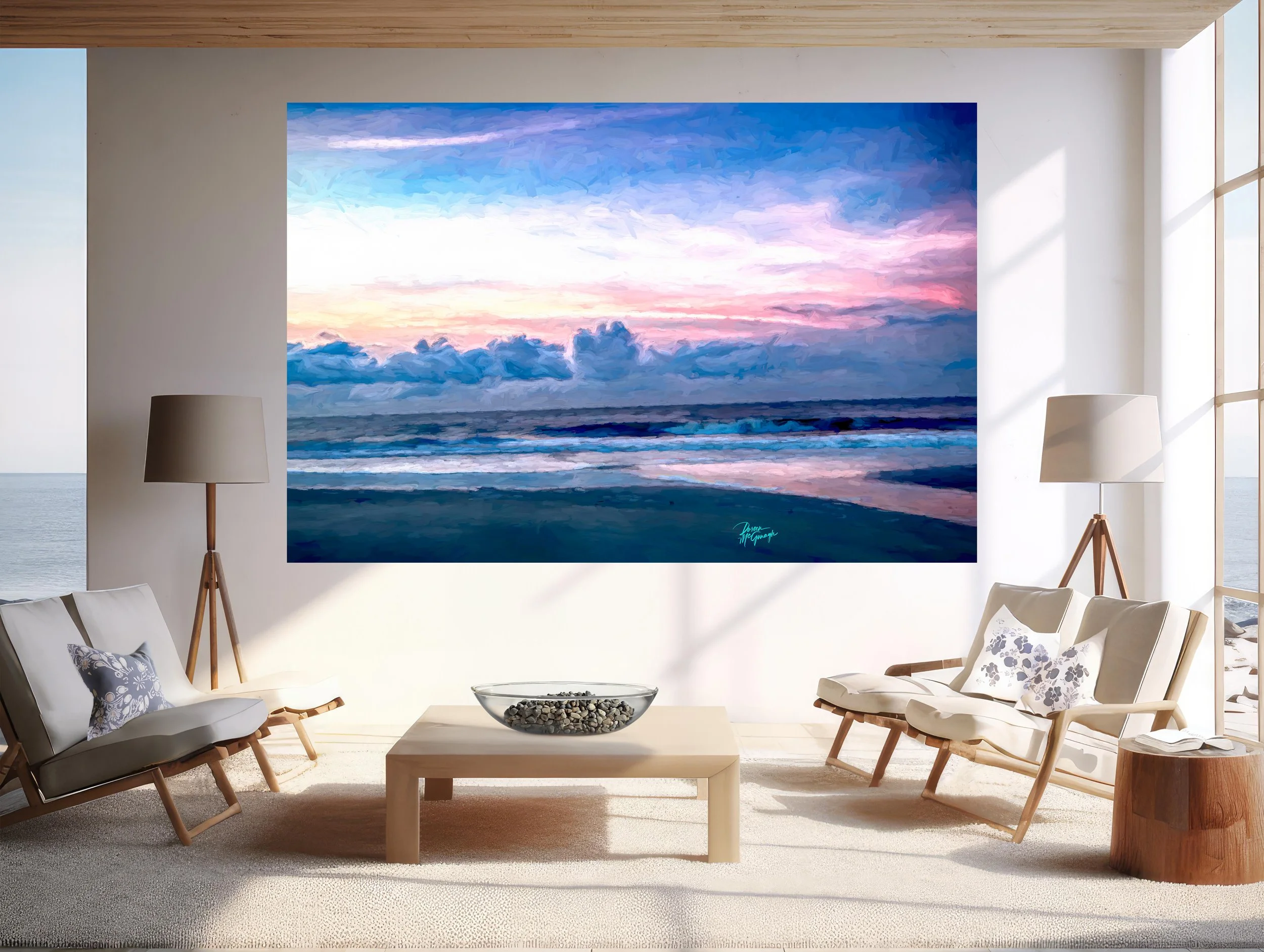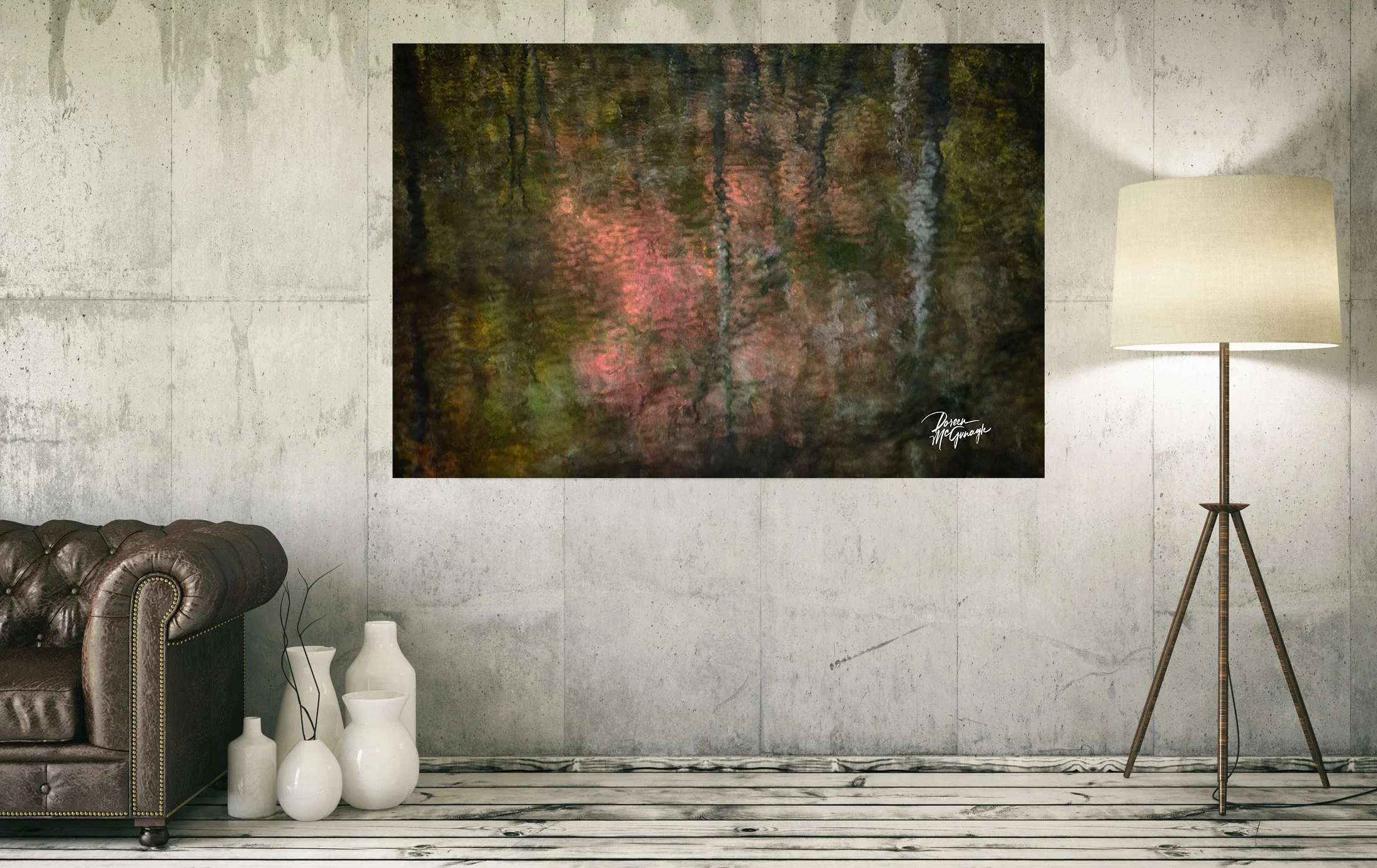Exploring the World of Abstract Photography
Abstract photography is a fascinating realm of art. It's a space where colors, shapes, and textures take center stage.
Cotton Candy Sunrise
Experience the enchanting allure of the "Cotton Candy Sunrise" limited edition fine art collection, featuring 20 exquisite images that will transport you to a dreamlike realm. This collection showcases the delicate beauty of pink and light blue clouds, evoking the whimsical charm of cotton candy skies.
Large Format Fine Art | Limited Edition 20
Cotton Candy Sunrise 6881-01 c2023 | Georgia | Learn More
Unlike traditional photography, it doesn't focus on capturing a clear subject. Instead, it invites viewers to interpret the image through their own lens.
This form of photography can be both challenging and liberating. It pushes the boundaries of visual representation, offering a fresh perspective on the world around us.
In this guide, we'll explore the world of abstract photography, including its history, key elements, and techniques.
Whether you're a seasoned photographer or a curious beginner, this article will provide valuable insights. Let's embark on this journey into the abstract, where imagination reigns supreme."
What is Abstract Photography?
Abstract photography, at its core, is about visual expression. It's a genre that transcends the literal representation of a subject.
Ephemeral Abstract River Reflections
Immerse yourself in the transient beauty of nature with our limited edition fine art collection, "Ephemeral." This exquisite collection captures the enchanting play of light and color as it dances upon the serene river reflections of autumn trees in the Great Smoky Mountains.
Large Format Art Print | Limited Edition 20
Great Smokey Mountains Ephemeral Abstract 9284-21 c2023 | Tennessee | Learn more
Instead of focusing on a clear subject, it emphasizes color, form, and texture. It's about capturing the essence of an object or scene rather than its actual appearance.
This genre of photography encourages viewers to engage their imagination. It invites them to interpret the image based on their experiences and emotions.
In essence, abstract photography is a form of visual poetry. It's a space where photographers can experiment, break rules, and express their unique vision.
The Evolution of Abstract Photography
Abstract photography has its roots in the early 20th century. It emerged as photographers began to experiment with new techniques and perspectives.
Pioneers of this genre, like Man Ray and Alfred Stieglitz, pushed the boundaries of visual representation. They challenged the notion that photography should only document reality.
With the advent of digital technology, the possibilities for abstract photography are endless. It continues to evolve, offering photographers a vast playground for creative expression.
Key Elements of Abstract Photography
Abstract photography is a genre that focuses on the essential elements of an image. It's not about capturing a clear subject but about evoking emotion and thought.
Shapes, colors, and textures are vital elements in abstract photography. They create a sense of depth and interest in the image.
The use of light and shadow also plays a crucial role. They can create contrast, highlight details, and add a sense of mystery to the image.
Finally, composition is vital in abstract photography. It guides the viewer's eye and can make or break an image.
Emphasizing Shapes, Colors, and Textures
Shapes, colors, and textures are the building blocks of abstract photography. They can be used to create a sense of depth and interest in the image.
For instance, a close-up shot of a leaf can reveal intricate patterns and textures. The colors can be manipulated to create a certain mood or atmosphere.
In abstract photography, the ordinary can become extraordinary. It's all about how you choose to frame and present your subject.
The Role of Light and Shadow
Light and shadow play a crucial role in abstract photography. They can create contrast, highlight details, and add a sense of mystery to the image.
For example, the interplay of light and shadow on a building can transform it into an abstract masterpiece. The shadows can create patterns and shapes that are not usually seen.
In abstract photography, light and shadow are not just tools. They are integral parts of the composition, adding depth and interest to the image.
Abstract Photography Techniques
Traditional rules do not bind abstract photography. It encourages experimentation and creativity.
One common technique is intentional camera movement (ICM). This involves moving the camera while the shutter is open, creating a sense of motion and blur.
Intentional Camera Movement (ICM)
ICM can create a painterly effect in photographs. It can transform a mundane scene into a dreamy, abstract image.
The key to successful ICM is to experiment. Try different shutter speeds, movements, and subjects until you find what works.
Playing with Focus and Macro Photography
Another technique used in abstract photography is playing with focus. By selectively focusing on certain parts of the scene, you can create a sense of depth and mystery.
Macro photography can also create abstract images. It lets you capture minute details often overlooked, transforming them into intriguing subjects.
Exploring Abstract Photography in Architecture
Architecture is a rich source of abstract images. The lines, shapes, and patterns found in buildings can be used to create compelling compositions.
In architectural abstract photography, it's essential to look beyond the obvious. Look for exciting details, play with perspective, and don't be afraid to experiment.
Abstract Photography in Black and White
Black and white can add a new dimension to abstract photography. It emphasizes form, shape, and contrast, stripping away the distraction of color.
By converting your images to black and white, you can focus on the essential elements of your composition. This can lead to powerful, evocative images that speak to the viewer on a deep level.
Remember, black and white is not just an absence of color. It's a different way of seeing and interpreting the world around you. Use it wisely to enhance your abstract photography.
Finding Abstract Subjects in Everyday Life
Abstract subjects are all around us. They can be found in the patterns of a leaf, the texture of a brick wall, or the play of light and shadow on a staircase.
The key is to develop an eye for these details. With practice, you can start to see the world in a new, abstract way.
Tips for Beginners in Abstract Photography
Starting with abstract photography can be a bit daunting. But don't worry, here are some tips to help you get started.
First, understand the basics of photography. Knowing how to control exposure, focus, and composition is crucial. This knowledge will give you the freedom to experiment and create abstract images.
Finally, don't be afraid to break the rules. Abstract photography is all about creativity and personal expression. So, let your imagination run wild and see where it takes you.
Conclusion: The Subjective Nature of Abstract Photography
In conclusion, abstract photography is a fascinating and diverse field. It challenges our perception of reality and encourages us to see the world in new and unexpected ways.
Remember, there's no right or wrong in abstract photography. It's all about personal interpretation and expression. So, go out there and start exploring the world of abstract photography.
Explore our online gallery of limited-edition conservation fine art prints. Join us in celebrating and preserving the beauty of our natural world through our exquisite collection of fine art photography.


